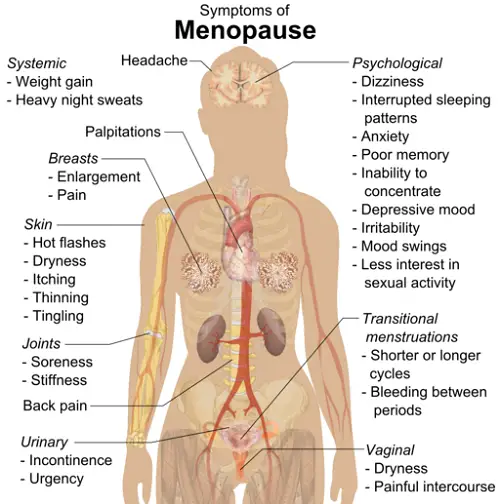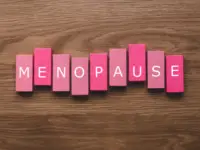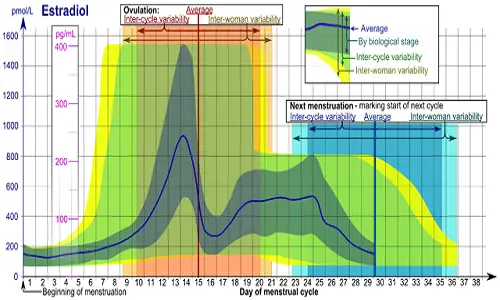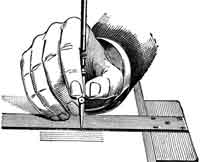
Menopause
Menopause occurs because of a genetically pre-determined decline in the number of ovarian follicles. In the medical world, it is strictly defined as 12 months of lack of menstrual period. At birth, women have an estimated 1-2 million primary ovarian follicles. By the time a woman experiences her first menstruation, there are only about 400,000 primary ovarian follicles left. The phenomenon of menopause occurs because of the depletion in number of ovarian follicles leading to a subsequent absence of hormonal secretion. The withdrawal of estrogen from a woman’s system causes the unwanted symptoms that are often observed by women who are experiencing this phenomenon. In the Western world, the mean age of menopause if 51 years old. Menopause, together with the immediate period before and after it, is collectively referred to as the perimenopausal period. A woman’s transition to menopause usually lasts for 5 years.
Fertility
Fertility is a woman’s natural capability to become pregnant. This capability gradually decreases as a woman reaches the terminal period of her reproductive life. This decline starts on the third decade of life, and becomes more evident by the time a woman reaches the age of 40. Research studies show that at the age of 42, the possibility of a natural pregnancy is less than 2%. After the age of 45, the chances of pregnancy reaches less than 1%. Aside from the decline in the number of ovarian follicle that is available for fertilization, implantation rates also decrease with advancing age. Based on research studies, implantation rates are only 20% at the age of 30, and less than 4% by the time a woman reaches the age of 40. Because of these factors, there is a gradual decline of birth rates in advanced age groups. Birth rates decrease to 95% by the time a woman is 45 years old, and to almost 100% during the perimenopausal period. However, the possibility of pregnancy still exists during the perimenopausal period because there can still be a few ovarian follicles that are available for fertilization. In fact, there have been some case reports of pregnancy in women beyond the age of 60 years old. Anatolia Vertadella is the current world record holder for most advanced maternal age. She was 101 years old when she gave birth. However, this was controversial because she had an ovarian transplant. The world record holder for the oldest mother to conceive naturally is Dawn Brooke, a woman from the United Kingdom who gave birth at the age of 59.
Options for Conception in Early Perimenopausal period
Natural Conception
According to epidemiologic estimates, the probability of pregnancy during the perimenopausal period is very low. However, the chances are not absolutely zero. In cases of natural conception, the chances of pregnancy-related complications are also high. The rates of spontaneous abortion substantially increases beyond the age of 45. At 30 years old, the rate of spontaneous abortion is 10%. By the time a woman reaches the age of 45, the rate of spontaneous abortion is 50-75%. Moreover, the incidence of congenital anomalies increases because of the increased prevalence of chromosomal abnormalities.
Assisted Reproduction
There have been considerable advances in the field of reproductive technology. The most popular assisted reproductive technique is still in-vitro fertilization. This is becoming increasingly common, most especially in industrialized societies wherein maternal age is also advancing. In this form of treatment, a fertility specialist prescribes medications to induce ovulation. In women who are unable to produce eggs despite fertility medications, another option is to obtain egg cells is from an egg donor. For women with a favorable response to fertility induction, the next process is egg retrieval, wherein the egg cell is harvested, and is stored in the incubator to mimic a favorable environment for survival. At the appropriate time, the egg cell can be fertilized with sperm cells. At times, the sperm cells are directly introduced into the egg cell. This is then stored in an incubator for embryonic development. The final step is embryo transfer, wherein the healthiest embryos are introduced into the woman’s uterine cavity for implantation. The success rate of this procedure varies, because of the presence of various confounding factors.
Summary
A woman’s reproductive capacity naturally decreases throughout the life span. The chances of conception substantially decreases by the time a woman reaches the fourth decade of life. During this period, women who desire to conceive have several options, due to the availability of state-of-the-art reproductive technology techniques. The genetically pre-determined decline in the number of primary ovarian follicles advances usually at the age of 45. It is also during this period that majority of women enter the perimenopausal period. It usually takes about 5 years to complete the process of menopause. During this period, the chances of pregnancy is very rare. Although, it is still possible especially if there are remaining viable follicles. However, the success of pregnancy decreases during this time because of the increased risk of complications, which involve spontaneous abortions and genetic abnormalities.












Leave a Reply